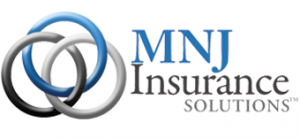California: New Legislation Amends the Paid Sick Leave as of July 13, 2015
California’s new paid sick leave law, the “Healthy Workplaces, Healthy Families Act of 2014” (paid sick leave law) recently went into effect on July 1, 2015. Less than two weeks later, the law has already been amended. On July 13, 2015, the California legislature passed AB 304 amending the Paid Sick Leave Law. Governor Jerry Brown signed the bill into law the same day, as the law contains an urgency clause and the changes become effective immediately. Below is a brief description of the most important changes.
Who are covered workers?
The amendments clarify that the law applies to an employee who works in California for the same employer for 30 or more days within a year.
How does the employer calculate the sick leave accrual?
The original law provided only one method of calculating the sickleave a grill. Now, with the amendment, the employer can calculate sick leave pay for nonexempt employees by one of the following:
- Using the same calculation used to determine the employees regular hourly rate for overtime purposes, or
- Dividing the employees total wages (excluding overtime) by the employee’s total hours worked in the full pay cycle of the prior 90 days of employment.
Under the amendment, the employer can calculate sick leave pay for exempt employees by the following:
- The same method of calculating wages as it uses for other forms of paid leave, such as vacation.
Alternative accrual method:
- The paid sick leave amendment clarifies that employers may use methods of occurring sick leave other than the “one hour of sick leave for every 30 hours worked method” (1-in-30 method) used in the original language of the law.
- Alternative accrual method, such as accrual by pay period or by months of employment are also valid, provided that the employees receive at least 24 hours (3 days) of sick leave by the 120th calendar day of employment or the employer’s sick leave year (calendar year or otherwise).
Employers existing paid time off (PTO) or sick leave policies:
Under the amendment of the Paid Sick Leave law, sick leave policies that existed before January 1, 2015 and that use an accrual method that differed from the “1-in-30 method,” have been grandfathered IF they meet the following three conditions:
- Accrual occurs on a regular basis;
- Employees receive not less than eight hours (one day) of sick leave within the first three months of employment or sick leave year; and
- Employees receive at least 24 hours of sick leave within the first nine months.
Listed below are some additional minor changes and clarifications to the paid sick leave law:
- Employers with unlimited sick leave policies can state “unlimited” on employees paycheck stubs, rather than having to list a specific number of days or hours.
- Employers do not have an obligation to reinstate an employee sick leave upon rehire within one year, if the employer paid the employee for the accrued sick leave upon termination.
- Employers do not have an obligation to ask employees about the reason for taking the leave.
- The language in the law of “a year” means a year of employment, a calendar year, or another employer designated 12 month period.
- The amendment clarifies that employees have to work for 30 days for the same employer before becoming eligible for paid sick leave.
Action items for Employers to comply with Healthy Workplace Healthy Family Act of 2014 (AB 1522):
If an employer implemented a new sick leave policy, or revise their previous sick leave or paid time off policy within the last six months, to comply with the requirements of the paid sick leave law, most likely, no immediate action is required. However, if an employer failed to revise its existing policy prior to July 1, 2015, the employer should immediately review the newly amended law to ensure their sick leave policy complies with the amended Paid Sick Leave law. Regardless of whether the employer’s policy is grandfathered or not, the newly amended law allows the employer to have an option of an accrual method that may better meet its business needs. We recommend that you have your policy reviewed by your legal counsel/Business attorney to ensure compliance and the appropriate language in your policies.
In addition, the employer must do the following to comply:
- Display poster on paid sick leave (Spanish) (Vietnamese) where employees can read it easily.Provide written notice to employees with sick leave rights (Spanish) (Vietnamese) at the time of hire.
- Provide for accrual of one hour for every 30 hours worked and allow use of at least 24 hours or 3 days or provide at least 24 hours or 3 days at the beginning of a 12 month period of paid sick leave for each eligible employee to use per year.
- Allow eligible employees to use accrued paid sick leave upon reasonable request.
- Show how many days of sick leave an employee has available. This must be on a pay stub or a document issued the same day as a paycheck.
- Keep records showing how many hours have been earned and used for three years. Affected employers may review the AB-1522 Employment: paid sick days Affected Employers may review the text of the amendments for the additional changes
For more information: Healthy Workplace Healthy Family Act of 2014 (AB 1522)
- Retaliation or discrimination against an employee who requests or uses paid sick days is prohibited. An employee may file a complaint with the Labor Commissioner against an employer who retaliates or discriminates against the employee for exercising these rights or other rights protected under the Labor Code.
- Local offices are listed on our website at http://www.dir.ca.gov/dlse/DistrictOffices.htm.
This content is provided for informational purposes only. While we have attempted to provide current, accurate and clearly expressed information, this information is provided “as is” and MNJ Insurance Solutions makes no representations or warranties regarding its accuracy and completeness. The information provided should not be construed as legal or tax advice or as a recommendation of any kind. External users should seek professional advice form their own attorneys and tax and benefit plan advisers with respect to their individual circumstances and needs.







